Weekend self-driving short trip guide to western Sichuan, where the scenery is more than just snow-capped mountains and grasslands
Preface
Western Sichuan is a place with wonderful exotic charm. Here, there are not only snow-capped mountains and grasslands, but also natural wonders similar to the alien world.


Western Sichuan is also a place full of faith, with temples everywhere and numerous monks. Whether on the plains, on the mountainside, or on the mountaintop, there are Buddhist temples here, and you can hear Buddhist chants and prayers everywhere.

One weekday evening, a friend suddenly sent me a WeChat message saying she wanted to leave Chengdu for the weekend and explore the surrounding area. I asked her where she'd like to go, and she suggested western Sichuan, somewhere closer. This impulse and thought led to my road trip to western Sichuan.

Itinerary
I was driving to western Sichuan, but I didn't have a car, so I decided to rent one. The journey to western Sichuan was long, and various road conditions could occur, so I decided to rent an SUV with a high chassis and good performance, which was safer and more reliable.
This trip was a 3-day, 2-night round-trip from Chengdu. I didn't want to leave early and return late every day, so I just wanted to relax and unwind. So, I didn't choose a very far destination or a lot of check-in spots. I just went with my heart.

Day 1: Chengdu - Luding - Kangding, stay in Kangding
Day 2: Kangding - Airport Road + Sidingcuo + Tagong Grassland + Moshi Park, stay in Tagong Town
Day 3: Tagong Temple - Muya Temple - Qingrao Mountain - Airport Road + Sidingcuo, return

Compared to the usual schedule of starting the journey early in the morning and not returning to the hotel to rest until late at night, I strongly reject this kind of routine arrangement.
So for the past two or three days, I've been sleeping in comfortably in the morning, waking up around 9 a.m., having a good breakfast, and starting my trip at 10 a.m. And by 7 or 8 p.m., I'd have dinner and wrap up the trip, which was incredibly relaxing. I'm already exhausted from work, so since I've chosen to relax on the weekend, I shouldn't make this a more tiring experience.
Luding丨Flying over Luding Bridge
Starting from Chengdu, the surrounding scenery changes from buildings and farmland to mountains and rivers. After passing through countless tunnels and following a road that resembles a winding dragon path down the mountain, you will reach Luding.

Luding County, nestled in the Hengduan Mountains on the eastern edge of the Qinghai-Tibet Plateau, is home to the deepest valleys of the western Sichuan plateau. The county is dotted with high mountains, steep valleys, and crisscrossing ravines. The turbulent Dadu River flows through, with shops and houses lining the river, creating a typical western Sichuan townscape. Luding is known as the eastern gate of Ganzi Prefecture, and once there, Kangding is not far away.
What most people know about Luding is the Luding Bridge. The story of the Red Army's rapid capture of the Luding Bridge, which we learned in textbooks since childhood, has left this small town and this iron chain bridge deeply etched in our memories.



Before heading to Luding Bridge, I stopped by a restaurant for lunch and ordered a dish of fish with pig intestines. The local spotted fish was tender and delicious, and the pig intestines were braised and thick. As a native of southern Sichuan, I prefer to cook the pig intestines raw, while other places prefer to braise them beforehand.

Luding County is located in a canyon, so the roads are very narrow. Please note that there is no public parking lot next to Luding Bridge. You can only park in the underground parking lot of a nearby hotel. The parking space is really small and the fee is really expensive.
Tips:
Parking fee: starting from 20 yuan
Parking time: about 3 hours


You can walk to the bridge head with the river breeze blowing, and then buy a ticket to go on the bridge. Before going on the bridge, it seems nothing special, but when you step onto the Luding Bridge, the experience is vertically enhanced.
Unlike typical suspension bridges and cable bridges, the Luding Bridge is much longer. Although the bridge is relatively wide, for safety reasons, visitors can only walk in the middle, not on the sides. Combined with the turbulent Dadu River beneath and the strong canyon winds, the bridge can sometimes be quite daunting when it shakes.


The Luding Bridge is about 100 meters long, with rolling hills and a Guanyin Pavilion on the other side. If you want to return after visiting the Guanyin Pavilion, you'll need to buy another bridge ticket. So, since we only wanted to experience the Luding Bridge, we simply turned around and walked back again.

Near Luding Bridge stands a popular sign that reads "318 Must-Drive." Many consider driving along National Highway 318 a must-do experience. And Luding, along the way, is a must-see.

Kangding|Nightlife in the Canyon
From Luding, we took the highway, mostly through tunnels, with no sunlight visible. After passing through several tunnels, we finally arrived in Kangding. It was almost evening when we arrived.
Kangding, the capital of Ganzi Prefecture, is a strategic point between Sichuan and Tibet, a key town on the ancient Tea-Horse Road, and a hub for the exchange of Tibetan and Han Chinese culture. Many people have known Kangding since childhood, thanks largely to the significant promotion over the years of the popular song "Kangding Love Song."

It was already 8 PM when I checked into the Kangding Hotel. The hotel was right by the river, a great location. I went downstairs to find a place to have dinner. Kangding is located at an altitude of around 2,500 meters, nestled in a valley with a river flowing through it, so the temperature was relatively low, and it got even colder at night. I'd packed an autumn jacket before heading out, but I still felt a chill.

Walk along the riverside toward the vibrant lights. Experience the nightlife of Kangding residents. Unlike the imagined quiet nightlife, the area is vibrant with shops, traffic, and even live singers performing on the sidewalks.

The roads in the old town are narrow and there are many vehicles, but everything is in order.

Zheduo Mountain | Second visit to Zheduo Mountain on a cloudy day
We set off from Kangding this morning and filled up our car with gas. Today's route took us over Zheduo Mountain and onto Kangding Airport Road, where we'll find the romantic Rainbow Road. We'll also visit Stingcuo and Red Lake, both popular check-in spots near Kangding Airport. On a clear day, you can gaze upon Mount Gongga from afar, with planes passing overhead, creating stunning photos.


Known as the "First Pass of Kham," Zheduo Mountain marks a crucial dividing line between Han and Tibetan cultures and the first high mountain pass to be crossed on the Sichuan-Tibet Highway. Due to its unique geographical conditions and the large number of travelers traveling between Sichuan and Tibet, this mountain has long been renowned, and its spectacular and captivating scenery is truly captivating.
Zheduo Mountain presents a significant challenge for first-time road users in western Sichuan or those prone to altitude sickness. The road is rugged, winding, and the climate is unpredictable. The highest point of Zheduo Mountain is over 4,900 meters above sea level, and the pass is 4,298 meters above sea level. Once you cross Zheduo Mountain, you officially enter the Kham Tibetan Autonomous Prefecture.

Airport Road + Stincuo|Disappointing First Sight
While checking my notes before departure, I was drawn to Kangding's Airport Road and the nearby Sidingcuo. On a clear day, Mount Gongga is clearly visible in the distance, planes glide overhead, and before me are rolling green hills and clear lakes. The rainbow signpost along Airport Road is incredibly romantic; everything is so captivating.

All the beautiful scenery was just imagination. Rainy days shattered all beautiful fantasies. The airport's rainbow road was dimmed, and Stincuo became a very ordinary little pond. There were no snow-capped mountains, no hills, no floating clouds.

You can use the navigation on your phone to get to Stincuo. You can get there from the small fork in the road next to the airport road. It is right next to the airport runway.

The distance from the fork in the road to Stincuo is about 500 meters. The first 400 meters are good, but the last 100 meters are filled with mud pits and gravel, which is quite shaky. Fortunately, the car I rented this time is very good, with a high chassis and built-in off-road capabilities, so dealing with this kind of road is a piece of cake.
If the weather is good, you should be able to see the magnificent Gongga Snow Mountain from here. Use a telephoto lens to capture stunning portraits.

Unfortunately, the weather was not good today, with a wall of dark clouds obscuring everything. But adhering to the traditional idea of "since I'm here, I still decided to take a commemorative photo of Stincuo.

On the way back, I stumbled upon a field of wildflowers and was pleasantly surprised. It was a messy yet vibrant scene, with vibrant yellow blossoms in full bloom. Running and jumping on the plateau at an altitude of over 4,200 meters, I didn't experience any altitude sickness, but I did feel quite breathless.

Miraculously, as we were about to leave, the clouds in the distant sky gradually dissipated. Light gradually appeared, and the mountains began to reveal themselves. The plateau's climate is changeable, and everything was beginning to take a turn for the better.

Tagong Grassland|Light and Shadow Games in the Sun
From the Stingcuo turnoff, we continued downhill until we reached the Tagong Grassland. The sky began to clear, and the scenery suddenly transformed from gloomy to bright. This was exactly how I imagined the scenery of the western Sichuan Plateau.

The weather began to clear up, and the scenery suddenly changed from gloomy to bright.


Tagong means "the place favored by the Bodhisattva," and when I arrived here, I was overwhelmed by the beauty of the surrounding landscape. I believe that anyone would love this place.

Yaks graze leisurely, the sky is blue, white clouds are white, and the fields are green. Coming to the grasslands, your body and mind are free, temporarily escaping the boredom and stress of city life and coming to this vast world to fully unleash yourself.

Moshi Park|Entering an Alien Planet
Before 2017, Moshi Park was an unknown "earth and stone forest". It was later artificially built into a park. It was not until July 2017 that it was rated as a national 4A scenic spot.
I don't know if Moshi Park is currently a popular tourist attraction or just a niche, internet-famous check-in spot. In any case, I've heard and seen it frequently over the past two years. Many people around me would make the round trip from Chengdu over the weekend just to shoot some exotic photos.

Please note when entering Moshi Park:
Tips:
Ticket price: 60 yuan
Transportation: You can choose the scenic area shuttle bus for 20 yuan (self-driving cars can only be parked in the parking lot at the entrance of the scenic area, which is free).
Duration: about 2 hours

Moshi Park is quite large, but for most visitors, the core area is sufficient. The shuttle bus doesn't allow you to return the same way, so there's essentially only one way to go. A stroll and photo opportunities along the way should take about two hours.

I had originally decided not to take the shuttle bus, thinking that if it was only a few hundred meters or a kilometer, I could walk. However, the ticket seller told me that walking up and down the mountain would take two or three hours, round trip. So I immediately decided to take the shuttle bus.
The shuttle bus was a small bus that usually departed when full, with about ten people at a time. The driver was very skilled, and we arrived in no time. Although the distance was not long, it was all on a very steep winding mountain road, so it would have taken quite some time to walk on your own.

Moshi Park is located in an area of active crustal activity. Influenced by the Quaternary neotectonic movement, the uplift of the Qinghai-Tibet Plateau and the flow of the famous Xianshui River have caused the rocks in the fractures to be continuously squeezed, sheared, crushed, and eroded, forming this mylonitic stone forest. Furthermore, this rock is rich in high-quality rare minerals such as montmorillonite and kaolin. When affected by air humidity, it can take on light gray or light blue in dry seasons and dark black in wet seasons, hence the name "color-changing stone forest."

It happens to be the wet rainy season recently, so the stone forests here fully demonstrate their characteristics as "ink stones", with various strangely shaped ink-colored stone forests protruding wantonly in the mountains and forests.

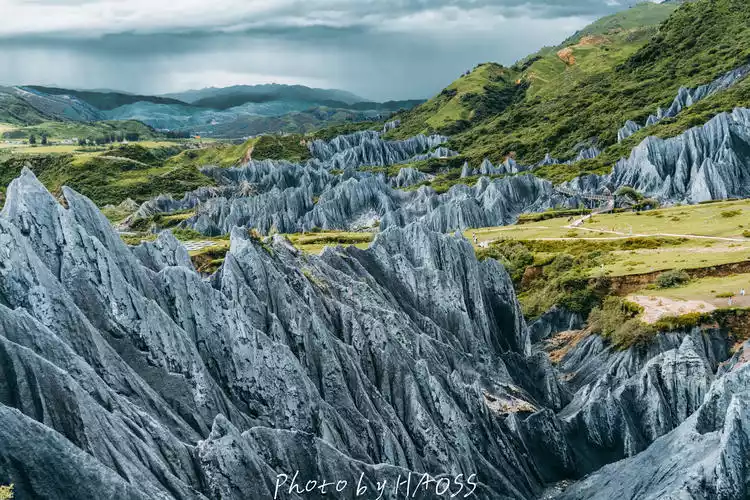

A large group of yaks roamed effortlessly through the steep rock forest. For the yaks here, this place is just their playground.

For ordinary tourists, the biggest significance of visiting Moshi Park is to take photos full of exotic planetary styles. Whether using a telephoto lens or a fixed focus lens, whether using a mobile phone or a camera, you can easily take unique landscape and portrait photos here.

There are many paths that lead you deeper into the stone forest. Interested friends can stand on the stones for a close encounter. However, be sure to pay attention to safety and be careful of any scratches, as the surface friction of these stones is extremely high.


I found that a couple also came here to take wedding photos. I have to say that taking wedding photos here is really cool and special.


Tagong Temple|An unexpected surprise
After leaving Moshi Park, we headed to Xinduqiao, planning to stay there for the night. We ended up in Tagong Town. As it was getting late, we realized there wasn't much point in going to Xinduqiao, so we decided to stay there.
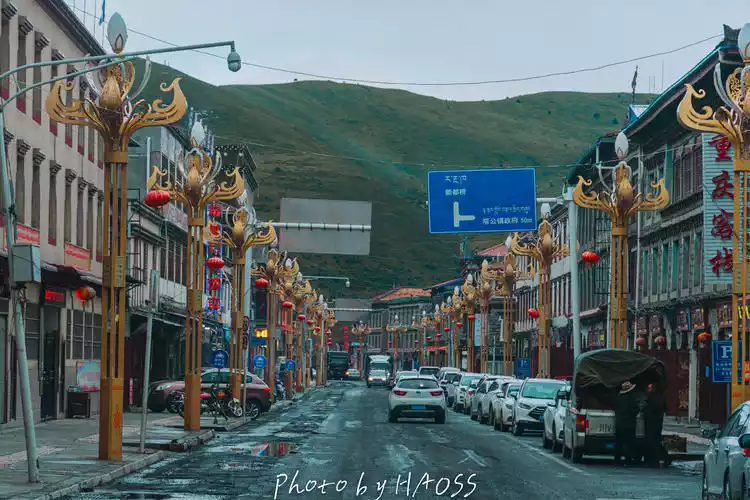
Tagong Temple in the center of Tagong Town was a place I decided to visit on a whim. Since I knew very little about religion and temples, I didn't do any research before setting off. I was simply drawn to the temple from outside and decided to go inside.
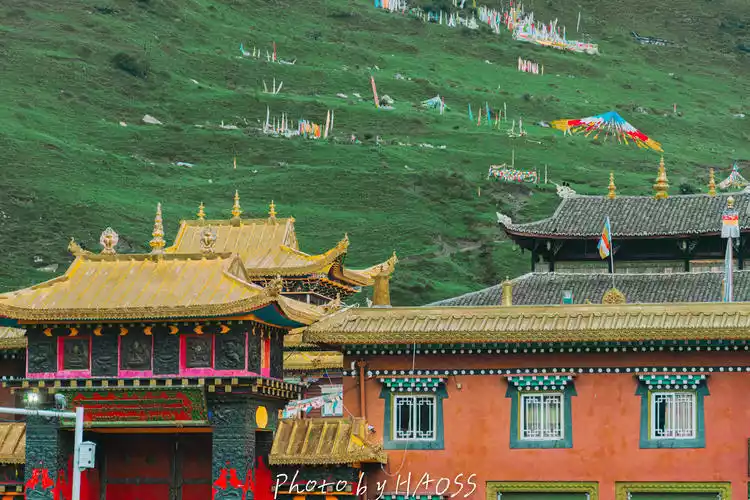
Tagong Temple is backed by Tagong Grassland, where prayer flags and pagodas stand in rows, while the temple at the foot of the mountain is solemn and sacred, forming a harmonious picture of nature and religion.
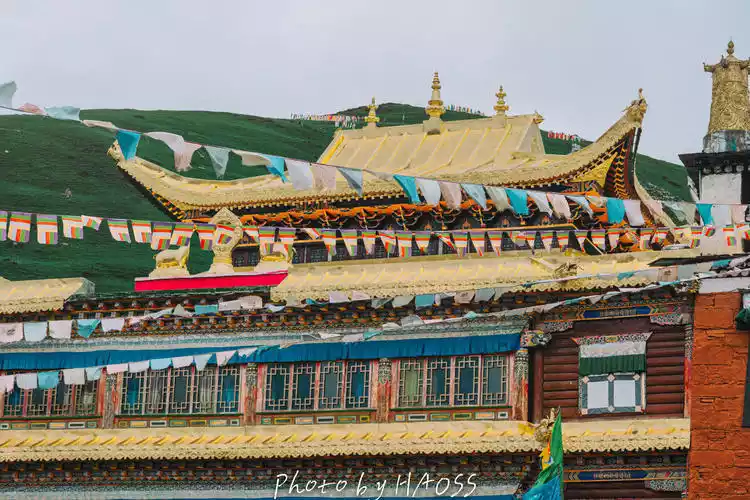
Tagong Monastery is a renowned Sakya (Flower Sect) temple in Garze Prefecture. With a history of over a thousand years, it is a major pilgrimage site for Tibetans in the Kham region. Along with Yachen Gar and Larung Gar (Seda Buddhist Academy), Tagong Monastery is a renowned major temple in Garze Prefecture.
Visitors need a ticket to enter Tagong Temple, which costs 20 yuan per person.


Tagong Monastery houses a statue of Sakyamuni identical to the one found in the Jokhang Temple in Lhasa. Legend has it that Princess Wencheng, passing through here on her way to Tibet, crafted a replica of the Sakyamuni statue she brought to Lhasa, leaving it for the temple. The Sakyamuni Hall houses the Sakyamuni statue sculpted by Princess Wencheng, along with a footprint left on stone by Phagpa, the Yuan Dynasty's imperial preceptor, during his visit to Tagong Monastery. There's also a meter-tall statue of the Thousand-Armed Avalokitesvara, created by Princess Wencheng to benefit sentient beings. The statue was crafted from sacred mountains and waters found in the Han-Tibetan region at the time, along with a large quantity of jewels. The statue is said to possess extraordinary magical powers.


The Guanyin Hall of Tagong Monastery houses the tallest gilded bronze statue of the Thousand-Armed and Thousand-Eyed Guanyin in Tibet. It is exquisite and spectacular.

Muya Grand Monastery|A Place of Faith in Lesser Seda
On my way back from Tagong Grassland to Moshi Park and back, I passed the archway of Muya Monastery. Back at the hotel, I researched the area and discovered that some angles and views here are known as "Little Seda." On my return trip, I decided to make a special trip to Muya Monastery to see this magical place.

Green mountains and clear waters, eternally green. Speeding along the grassland highway, I felt a special joy. Everywhere I looked, I saw greenery, and breathing in the grassy wind, I felt a natural joy.

All the black spots on the grassland in the distance are yaks, growing, breathing, and eating freely between heaven and earth. This is their territory and their home.

Muya Monastery is a vast temple complex comprising a monastery, a lama temple, a Buddhist college, and a Tibetan hospital. Many brightly colored houses dot the hillside, with a sky burial platform on the hilltop, the snow-capped mountains in the background, and areas for circumambulation and worship below. Its structure and design are nearly identical to those of the Serthar Buddhist College, and it remains the same. From a distance, it truly feels like a "smaller Serthar," but without the uniform red walls, it feels more lived-in.


The Muya Temple is very large, and the main hall is at the far end. Due to time constraints, I didn't go there. I just looked at the prayer wheel area and the living area of the monks and believers.
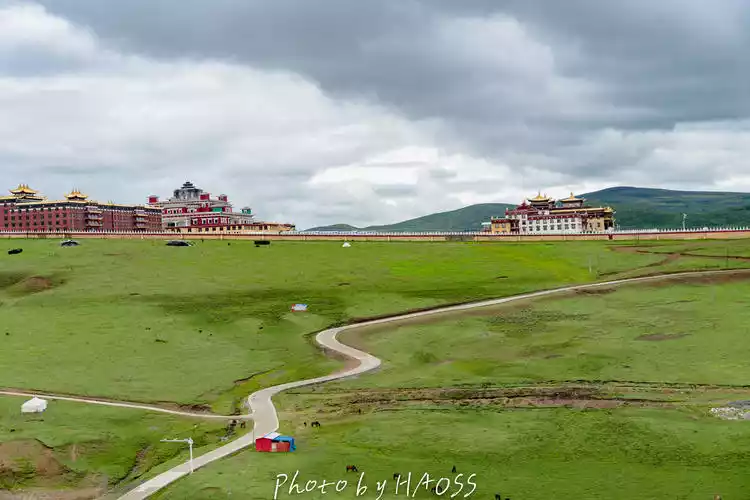
The prayer wheels at Muya Temple are a place of practice for believers, a place of rest for tourists, and a treasure trove of photos for photographers.


Local residents, monks, and believers of all backgrounds come here to turn the prayer wheels. Some do so silently, while others chant. This is their unwavering faith, their prayers, and their hopes.

Even the oldest monks, even those with a hobbled gait, still walk around the prayer wheel, praying, wishing, and sharing their thoughts.

The Muya Grand Temple boasts the world's largest Mani pile, with over 3 billion stone inscriptions of the Six-Syllable Mantra, representing a 200-year history. If you prefer, you can also choose a stone slab, with prices varying depending on the size.

Entering the hall, although it is not the main hall of the temple, it is still magnificent, spacious and majestic. The scale of the hall is much larger than that of Tagong Temple, although I always thought it was very small before entering the hall.

Imagine that there are monks sitting here together, studying Buddhism, and whispering faintly in your ears.
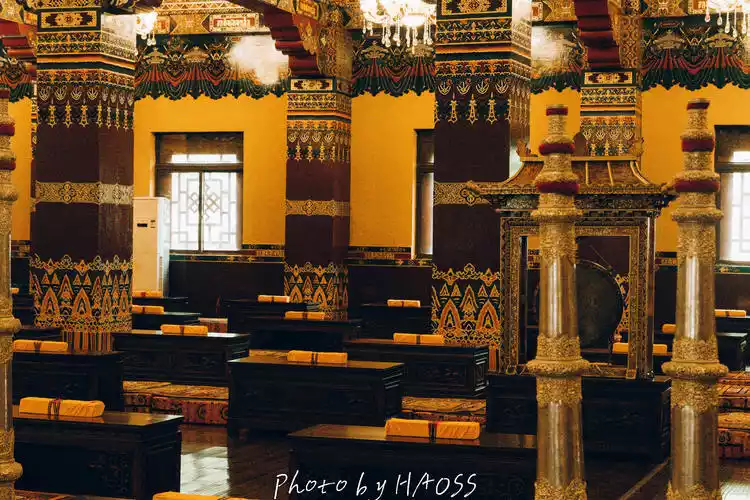
Green Mountain | A painting under the sunshine
When I passed Qingrao Shenshan, the scenery was so beautiful that I stopped the car and lingered there. The winding road passed through the endless grassland, with mountains rolling in and light and shadow lingering.


Qingrao Sacred Mountain is located between Yala Pass and Tagong Grassland. The wind is extremely strong and the clouds move rapidly, causing flickering light and shadows on the top of the mountain.


Although the weather has been mostly cloudy these past two days, it's cleared up briefly in the afternoons. Whenever the sun breaks through the clouds and illuminates the earth, the world becomes incomparably beautiful. A clear blue sky, pristine white clouds, rolling hills, a green carpet of grassland, and herds of cattle and sheep grazing leisurely. The sunlight moves with the shifting clouds, and the light and shadows on the grassland change in an instant, making me unable to stop clicking my camera.

Standing high up, I gazed at the distant snow-capped mountains, though their true form remained hidden. Travel is like this: fully prepared, with all gear packed, and a clear mind and expectations, we set off. But the weather is unpredictable: it could be scorching, or it could rain. There might be clouds, or perhaps a rainbow.


Airport Road + Stincuo|Happy to meet again
On the way back, we had to go back the same way, so we would pass by Airport Road and Stincuo again. Taking advantage of the afternoon sun, when I came to Airport Road again, the scenery was completely different from when I first arrived yesterday.

With sunlight, everything in the world becomes vibrant. The rainbow-colored landscape evokes a vibrant, vibrant dance along the undulating road, while distant peaks loom. If the distant clouds weren't thick, the surrounding snow-capped mountains would be a truly stunning photo op.

There is a parking observation deck on Airport Road, facing the airport runway and the Stingcuo Lake. There are not many vehicles passing here, and because of the bends, the speed is generally not fast, so it is more suitable for taking photos and checking in. Of course, when taking photos, you must still pay attention to the vehicles on both sides, avoid them as soon as possible, and pay attention to safety.

From the parking observation deck, you can see the runway of Kangding Airport. The small lake under the runway is Stingcuo.


We retraced the path to Stingtso Lake. It was very quiet here, and the wind was light, barely creating ripples on the lake. The clouds were still thick, and Mount Gongga was nowhere to be seen. But the scenery was already satisfying.
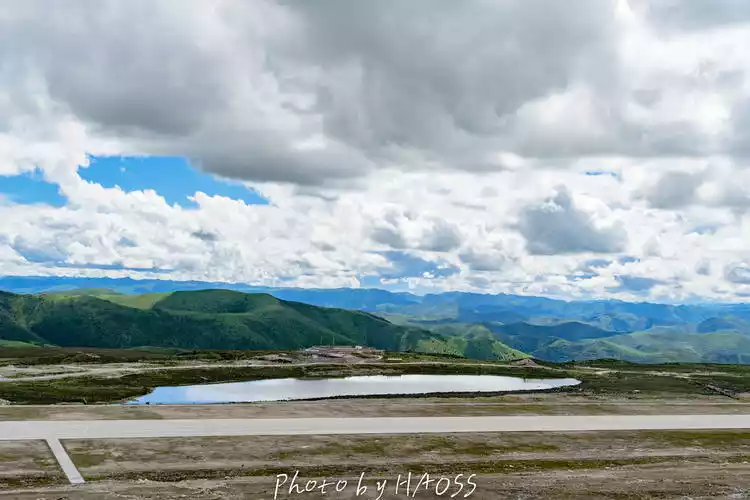
The fluttering prayer flags and scattered longdas that can be seen everywhere in Tibetan areas appear very holy and hopeful under the sun.

At the last moment of the journey, people spread longda beside the colorful prayer flags fluttering in the wind and pray to the gods that everything will go well and be auspicious.

Short Trip Guide to Western Sichuan
About time, temperature and clothing
This trip was purely a spur-of-the-moment decision, as I wanted to get out and about, so I didn't dwell on whether it was the right time to visit western Sichuan. Western Sichuan is actually a great place to visit year-round, with its unique beauty at every turn. However, the recent period, from June to August, is considered the rainy season in western Sichuan, so the scenery is more dependent on luck.
The altitude of western Sichuan is generally around 3,000-4,000 meters, so the temperature is relatively low. Even if you go to western Sichuan in the summer, you must bring autumn and winter clothes, and you can also bring a down jacket.
About altitude sickness
Altitude sickness varies from person to person. If it's your first time in the plateau or you're prone to it, it's recommended to take Rhodiola rosea and other supplements a month in advance. Also, bring portable oxygen for emergencies. Avoid strenuous exercise to reduce your body's oxygen needs. Book a hotel with diffused oxygen for a more comfortable and restful night's sleep.
Accommodation recommendations
Tips:
Hotel: Kangding Liyi Hotel
Price: around 200 yuan/standard room
Location: The hotel is located right on the Zheduo River. The rooms near the river have great views and it is only a few hundred meters walk to the downtown area.
The hotel's overall style and design are comfortable and welcoming, with designer details evident in every detail. For a hotel priced around 200 yuan per night, it's excellent value. Importantly, the hotel offers free underground parking, though spaces are quite tight due to its location in the old town.


Tips:
Hotel: Tagong Grassland Hotel
Price: around 180/standard room
Although Tagong Town is small, it has a large number of hotels and inns of all levels. The Grassland Hotel is quite affordable and has a great location right in the town. It's more of a unique inn than a hotel. Parking is convenient and spacious, and you can park right outside your room. The interior decoration is simple, but considering the price, it's satisfactory.

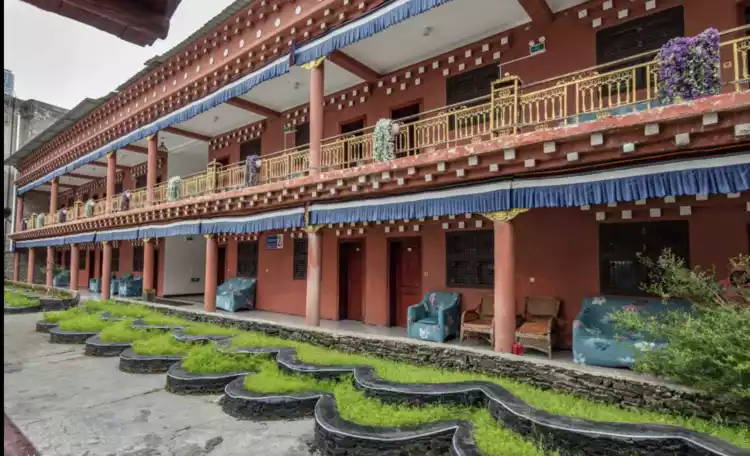

About consumption
The toll from Chengdu to Kangding is about 160 yuan one way and about 300 yuan round trip.
Accommodation is 200 yuan per night. For dining, both in Kangding and Tagong, there are many Sichuan cuisine restaurants and hot pot restaurants. Prices are relatively high, but acceptable. A meal for two people costs around 120 yuan.
The only places requiring entrance fees during the entire trip were Luding Bridge, which cost 10 yuan. Moshi Park entrance fees and a shuttle bus were 80 yuan per person. Tagong Temple was 20 yuan per person. The total gas cost for the three-day trip was 600 yuan.
Conclusion
If you also have a special yearning for the mysterious and vast nature, then I suggest you come to western Sichuan.





